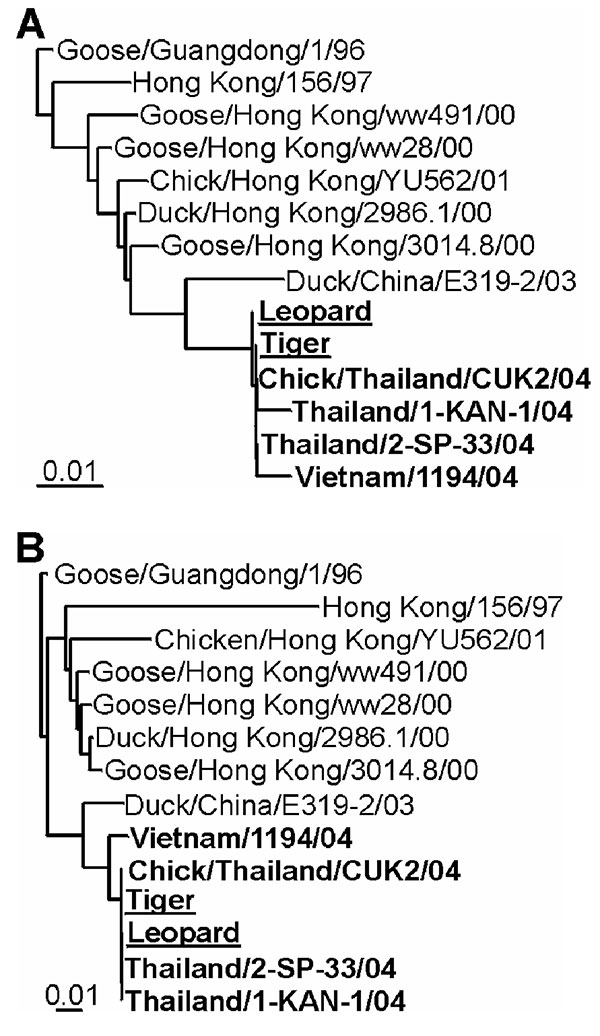Volume 10, Number 12—December 2004
Dispatch
Avian Influenza H5N1 in Tigers and Leopards
Figure 2

Figure 2. Phylogenetic comparison of zoo felid isolates with other H5N1 viruses. DNA maximum likelihood tree of hemagglutinin and neuraminidase sequences. Representative full-length Asian influenza A virus H5 (A) and N1 (B) sequences from 1996 to 2004 are shown with 2004 sequences in bold and leopard and tiger sequences underlined. Maximum likelihood trees were generated by using 100 bootstraps and three jumbles, and the resulting consensus trees were used as a user tree to recalculate branch lengths. The trees had good bootstrap support for the trees. Scale bars roughly indicate 1% nucleotide difference between related strains. Accession no. used: A/Goose/Guangdong/1/1996 (AF144305 and AF144304), A/Hong Kong/156/1997 (AF028709 and AF028708), A/Goose/Hong Kong/ww491/2000 (AY059480 and AY059489), A/Goose/Hong Kong/ww28/2000 (AY059475 and AY059484), A/Chicken/Hong Kong/YU562/2001 (AY221529 and AY221547), A/Duck/Hong Kong/2986.1/2000 (AY059481 and AY059490), A/Goose/Hong Kong/3014.8/2000 (AY059482 and AY059491), A/duck/China/E319-2/2003 (AY518362 and AY518363), A/Thailand/1-KAN-1/2004 (AY555150 and AY555151), A/Thailand/2-SP-33/2004 (AY555153 and AY555152), A/Chicken/Thailand/CU-K2/2004 (AY590568 and AY590567), A/Leopard/Thailand/2004 (AY646175 and AY646176), and A/Tiger/Thailand/2004 (AY646167 and AY646168).
Keywords: carnivore, communicable diseases, emerging, conservation of natural resources, influenza; influenza A virus, avian, molecular biology, pathology, pneumonia, viral, Thailand, virology, dispatch